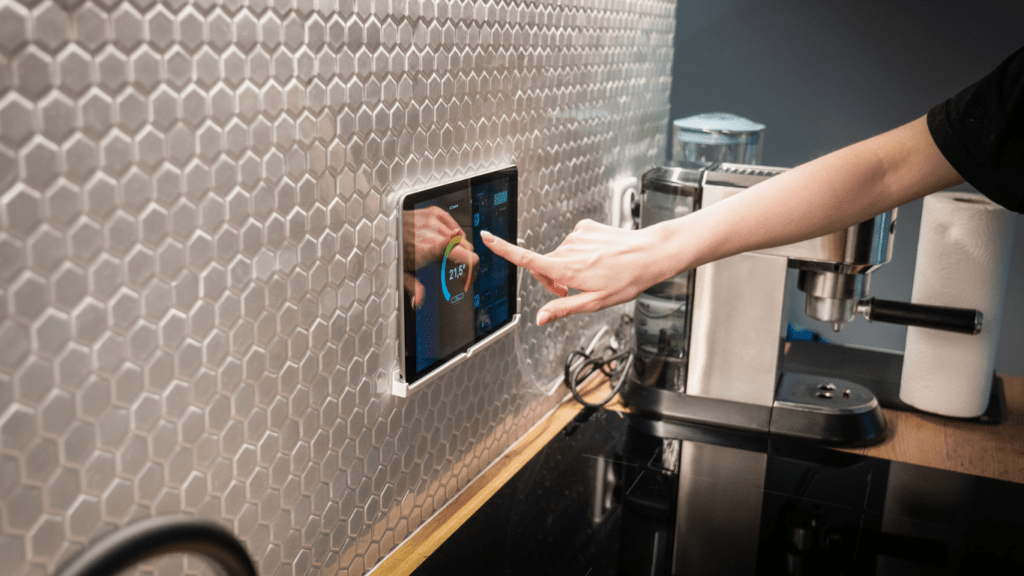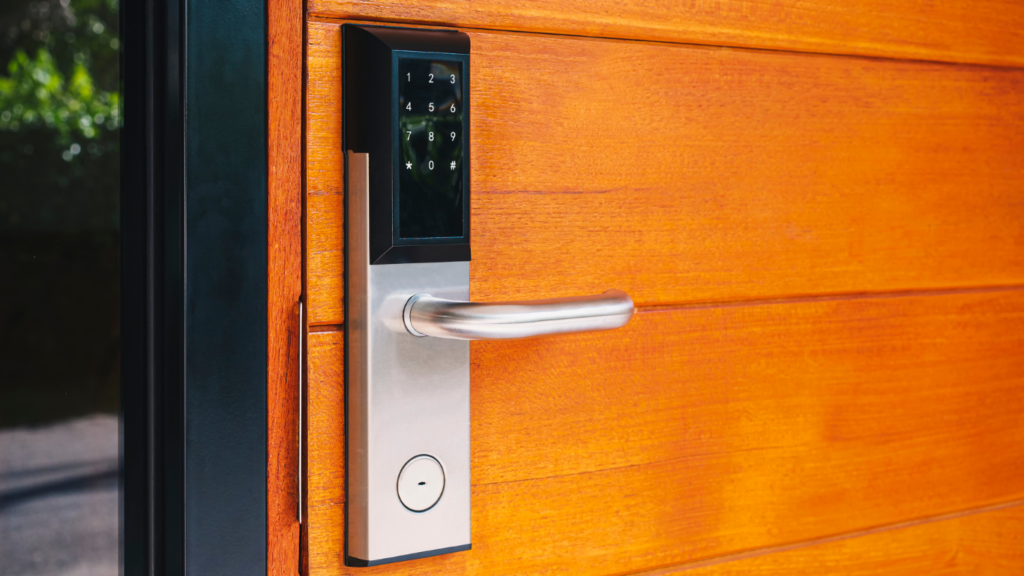What Are Smart Homes?
Smart homes are residential spaces equipped with interconnected devices that can be remotely controlled and automated. These devices range from lighting systems and thermostats to security cameras and kitchen appliances. Each device communicates via the Internet of Things (IoT), creating a seamless experience that enhances living conditions.
These connected technologies allow homeowners to monitor, manage, and optimize their living environments with ease. For instance, a smart thermostat can learn a household’s schedule and adjust the temperature accordingly, increasing energy efficiency and comfort. Smart lighting systems can be controlled via smartphone apps or voice commands, offering convenience and customization.
Security also plays a significant role in smart homes. Advanced systems feature motion detectors, smart locks, and surveillance cameras that can send real-time alerts to your smartphone. This ensures that users are always aware of what’s happening around their homes, providing peace of mind.
Home entertainment is another integral aspect. Smart TVs, speakers, and streaming devices work together to offer a unified entertainment system. With a simple voice command or app interaction, you can control the entire setup, from selecting a movie to adjusting the volume.
In essence, a smart home leverages technology to simplify everyday tasks and provide a more comfortable, secure, and efficient living environment.
Key Technologies in Smart Homes
Numerous innovative technologies drive the smart home revolution, making life more convenient and efficient for homeowners.
Smart Lighting Systems
Smart lighting systems offer unparalleled convenience and energy efficiency. These systems often feature LED bulbs that can be controlled via smartphone apps or voice commands using platforms like:
- Google Assistant
- Apple HomeKit
- Amazon Alexa
For instance, users can adjust brightness levels, change colors, or set schedules to automate lighting based on daily routines. Additionally, smart lighting systems can integrate with other smart home devices to create a cohesive environment.
Home Automation Hubs
Home automation hubs act as the central control point for all smart devices. These hubs, such as Samsung SmartThings, Apple HomePod, and Amazon Echo, enable seamless communication among various smart devices, creating a unified ecosystem. By consolidating control, homeowners can manage lighting, security, thermostats, and entertainment with one interface. For example, a single command can lower the thermostat, dim the lights, and lock the doors simultaneously when leaving the house.
Smart Security Solutions
Smart security solutions enhance home safety through advanced detection and real-time monitoring. These solutions typically include smart locks, video doorbells, motion detectors, and surveillance cameras. Products like Ring Doorbell, Nest Cam, and August Smart Lock offer features such as live video feeds, two-way audio, and instant notifications. Homeowners can monitor their property from anywhere, receive alerts in case of unusual activity, and remotely grant access to trusted individuals.
Energy Management Systems
Energy management systems optimize household energy consumption, improving efficiency and reducing costs. Smart thermostats, such as Nest Learning Thermostat and Ecobee, adjust temperatures based on occupancy patterns and weather conditions. They provide detailed energy usage reports and suggest ways to save energy. Additionally, smart plugs and power strips allow users to control and monitor the power usage of individual appliances, ensuring devices are only active when needed. These systems contribute to significant energy savings while promoting sustainability.
Benefits of Smart Home Technology

Smart home technology is revolutionizing the way we live, offering numerous benefits that enhance everyday life.
Convenience and Comfort
Smart home technology elevates comfort by automating routine tasks. I can control lighting, thermostat settings, and even kitchen appliances from my smartphone or through voice commands. For instance, I can set my coffee maker to start brewing before I wake up, making my mornings smoother. Automated lighting systems adjust the ambiance based on my preferences, enhancing relaxation and productivity. Smart speakers also play my favorite music and read audiobooks aloud, integrating seamlessly into my daily routine.
Enhanced Security
- Smart security features provide peace of mind by monitoring the home around the clock.
- Using smart locks, I can secure my doors remotely, granting or revoking access as needed.
- Video doorbells notify me of visitors, allowing me to see and communicate with them through my smartphone.
- Motion detectors and security cameras alert me to unusual activity, while smart alarm systems promptly inform emergency services if necessary.
- This constant vigilance ensures that my property remains safe.
Energy Efficiency
Smart home technology optimizes energy consumption, promoting sustainability. Smart thermostats learn my schedule and adjust temperatures to reduce energy waste. They also provide real-time data, helping me understand my energy usage patterns. Smart lighting systems turn off automatically when no one is present, lowering electricity costs. I also use smart power strips that shut off power to idle devices, further conserving energy. By making informed adjustments to my energy use, I contribute to environmental sustainability.
Cost Savings
Adopting smart home technology can significantly reduce expenses. Energy-efficient systems, such as smart thermostats and lighting, lower utility bills by optimizing consumption. Automated energy management avoids unnecessary usage, contributing to substantial long-term savings. Additionally, smart water leak detectors prevent water damage by alerting me to leaks, reducing potential repair costs. Over time, these savings offset the initial investment in smart devices, making them a cost-effective choice for homeowners.
By highlighting these benefits, smart home technology proves invaluable in enhancing my comfort, security, and efficiency, all while offering significant cost savings.
Challenges and Considerations
Smart home technology offers many benefits, but it also presents several challenges and considerations that users should understand.
Privacy Concerns
Privacy concerns arise with smart homes because devices collect and share data. Smart cameras and microphones, for example, record and store personal information. Users risk unauthorized access and data breaches if security measures aren’t strong. Ensuring robust encryption and using secure passwords mitigates these threats.
Initial Investment Costs
The initial investment costs for setting up a smart home can be significant. Devices like smart thermostats, security systems, and automation hubs have high upfront price tags. However, the long-term savings on energy bills and the added convenience can justify the initial expenditure for many. Careful budgeting and prioritizing essential devices can help manage these costs.
Compatibility Issues
Compatibility issues arise because not all smart devices work seamlessly together. Multiple brands might require separate apps or systems, complicating control and management. Home automation hubs partially solve this issue, but verifying device compatibility before purchase is critical. Opting for devices that support standard protocols like Zigbee or Z-Wave can reduce these issues.
Future of Smart Homes
The future of smart homes is bright, with rapid advancements making life even more seamless and efficient. Emerging technologies promise to elevate the smart home experience to unprecedented levels of convenience.
AI and Machine Learning Integration
AI and machine learning are revolutionizing smart homes by enabling devices to learn user preferences and automate tasks. For instance, AI-powered assistants like Amazon Alexa and Google Assistant can now recognize individual voices, tailoring responses and actions based on personal routines. Machine learning algorithms in smart thermostats analyze heating and cooling patterns to optimize energy usage, reducing bills and environmental impact.
Increased Interconnectivity
Interconnectivity among smart devices is increasing, creating more cohesive and synchronized home environments. Protocols like Zigbee and Z-Wave ensure compatibility between diverse devices, allowing homeowners to control everything from lights to security systems through a single app. The Matter protocol, backed by tech giants like Apple, Google, and Amazon, promises to further unify device ecosystems, simplifying the user experience.
Innovations on the Horizon
Innovations such as augmented reality (AR) and 5G technology are set to transform smart homes. AR can enhance interactive home management, allowing users to visualize device settings in their physical space. With the high-speed, low-latency benefits of 5G, smart devices can communicate more efficiently, enabling real-time control and faster data processing. These advances will make smart homes more responsive and adaptable to user needs.


 Patience Degarmonic was instrumental in building the community and health sections of News Flip Network, bringing a fresh perspective to the platform. Her focus on wellness content, along with her efforts in curating relevant and insightful articles, added depth to the site’s offerings. Degarmonic’s contributions ensured that readers not only stay informed about current events but also gain valuable tips for leading balanced and healthy lives.
Patience Degarmonic was instrumental in building the community and health sections of News Flip Network, bringing a fresh perspective to the platform. Her focus on wellness content, along with her efforts in curating relevant and insightful articles, added depth to the site’s offerings. Degarmonic’s contributions ensured that readers not only stay informed about current events but also gain valuable tips for leading balanced and healthy lives.